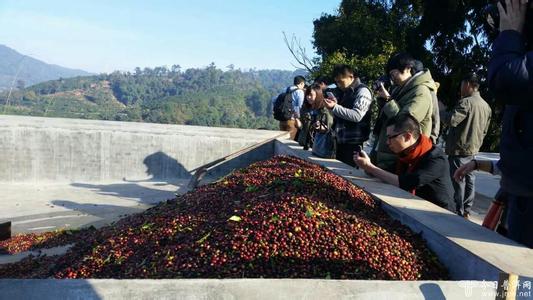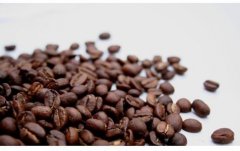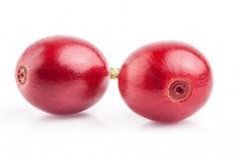A brief introduction to the Origin and Development of Coffee Variety cultivation in Saint Roman Manor, Costa Rica

During the harvest season, the sugar content of the fruit is measured by the sugar meter (Brixmeter) often equipped by the wine industry, and the best time and treatment are determined according to the brix sugar content. Only those with more than 20% sweetness will be exposed to the sun. The Brix value of general fruit is 14 for apple, 12 for lemon and 18 for passion fruit, but the coffee cherry of Fenghuang Manor can reach 21-22.
The cultivation of coffee in Costa Rica has a long history, but in the past 10 years, the new "dry" treatment has become a trend, collectively referred to as the "honey treatment". Honey treatment is a kind of treatment between sun drying and water washing. It keeps the coffee clean by washing, and because it is dried in the sun together with the pulp mucosa, it greatly increases the sweetness and caramel flavor of the coffee (the sugar content of the pulp mucosa is extremely high). Honey treatment first appeared in Costa Rica in Central America, mainly because of the lack of water resources in some high-altitude areas of Central America, so the coffee fruit was dried in the sun together with the pulp mucosa after using the pulp sieving machine. Honey-treated coffee beans are graded according to the degree of retention of the pulp (from less to more): yellow honey (20%), red honey (50%) and black honey (100%). The drying time of raw coffee beans treated with red honey is 2-3 weeks, usually due to weather or placed in a dark place. If the weather is clear, the grower will shade part of the sun to reduce the sunlight time. The advantage of this is that it can avoid the excessive fermentation caused by direct exposure, so that the overall dried fruit flavor of coffee is obvious but not too strong, the fruit flavor is delicate and the fat is thick and lasting, and the rhyme is long!
Other coffees worth mentioning are JuanVinas,PR, H.Tournon, Windmill,SHB, Montebello and SsntaRosa. Fine coffee is generally grown in Geredia and the central canyon. Another striking type of coffee is Sarchi (one of the five towns that represent Costa Rica's Coffee Road), which grows on the slopes of the PoasVolcano volcano, 53km from San Jose. Saatchi, founded in 1949, has a land area of 30770 hectares and grows sugar cane and coffee. The area is also famous for its handicrafts, attracting tourists from all over the world.
Located in the fertile hills of the Poas volcano in the central valley of Costa Rica, Fenghuang Manor is the first producer in Central and South America to produce honey treatment and sun-tanned coffee. It is a completely 100% organically grown coffee manor. The owner believes that organic farming is a better choice for environmental maintenance and family health, even though it faces many technical and organizational challenges. Still adhere to this belief.
The manor attaches great importance to the concept of environmental treatment, such as collecting Rain Water to process coffee, and the production and use of organic compost using earthworm farming (worm composting) makes the planting process completely free of chemical fertilizers and pesticides. The high-quality coffee produced by this estate is very unique, the biggest feature is that it has a very amazing sweetness, 100% organic coffee! He became famous when he took part in the boutique coffee contest in 2009.
Important Notice :
前街咖啡 FrontStreet Coffee has moved to new addredd:
FrontStreet Coffee Address: 315,Donghua East Road,GuangZhou
Tel:020 38364473
- Prev

A brief introduction to the description characteristics of flavor, taste and aroma in the producing area of Costa Rican coffee St. Roman Manor.
During the harvest season, the sugar content of the fruit is measured by the sugar meter (Brixmeter) often equipped by the wine industry, and the best time and treatment are determined according to the brix sugar content. Only those with more than 20% sweetness will be exposed to the sun. The Brix value of general fruit is 14 for apple, 12 for lemon and 18 for passion fruit, but the coffee cherry of Fenghuang Manor can reach 21-22.
- Next

A brief introduction to the characteristic treatment of the flavor and taste of Costa Rican coffee St. Roman Manor
After peeling, the peel and pulp of the coffee fruit are recovered as feed for livestock, or converted into organic fertilizer, as well as coffee bean dryer fuel. It can be said that in every process of coffee production, Costa Rica complies with the requirements of maintaining the natural environment. Among the many excellent producing areas in Costa Rica, there is a famous producing area named Tarrazu.
Related
- Does Rose Summer choose Blue, Green or Red? Detailed explanation of Rose Summer Coffee plots and Classification in Panamanian Jade Manor
- What is the difference between the origin, producing area, processing plant, cooperative and manor of coffee beans?
- How fine does the espresso powder fit? how to grind the espresso?
- Sca coffee roasting degree color card coffee roasting degree 8 roasting color values what do you mean?
- The practice of lattes: how to make lattes at home
- Introduction to Indonesian Fine Coffee beans-- Java Coffee producing area of Indonesian Arabica Coffee
- How much will the flavor of light and medium roasted rose summer be expressed? What baking level is rose summer suitable for?
- Introduction to the characteristics of washing, sun-drying or wet-planing coffee commonly used in Mantenin, Indonesia
- Price characteristics of Arabica Coffee Bean Starbucks introduction to Manning Coffee Bean Taste producing area Variety Manor
- What is the authentic Yega flavor? What are the flavor characteristics of the really excellent Yejasuffi coffee beans?

